
surfresearch.com.au
surfer : midget and world contest, 1964
surfer : midget and world contest, 1964
|
|
|
|
|
|
 |
surfresearch.com.au
surfer : midget and world contest, 1964 |
| Midget Farrelly Interview. | Ron Perrott: Australian World Contest. | Newport Wedge |
| 1964 1st World
Championships, Manly Beach, NSW (May 16
and 17). Open: 1st Midget Farrelly 2nd Mike Doyle (USA) 3rd Joey Cabell (USA) 4th Bobby Brown, 5th Mick Dooley 6th L.J. Richards (USA). Women: 1st Phyllis O’Donell 2nd Linda Benson (USA) 3rd Heather Nicholson Juniors. 1st Robert Connelley 2nd Nat Young 3rd Wayne Cowper (All competitors are Australian, except where noted.) British Pathe: "Midget" Regains World Board-Riding Title (1964) https://www.youtube.com/watch?v=x_BrPbyDZps Misleadingly titled Open Surfboard Championships In Australia (1929) Footage of 1964 Makaha contest, won by Joey Cabell, followed film of the mens, womens and juniors at the 1964 World Contest at Manly. Final Results World Surfboard Championships. Manly Beach, NSW. May 16 and 17, 1964. Manly Library L.S.W. 797.32 AUS Typed document, included in held copy of Contest Program. Forwarded, with thanks, by Garry Crockett, August 2011. |
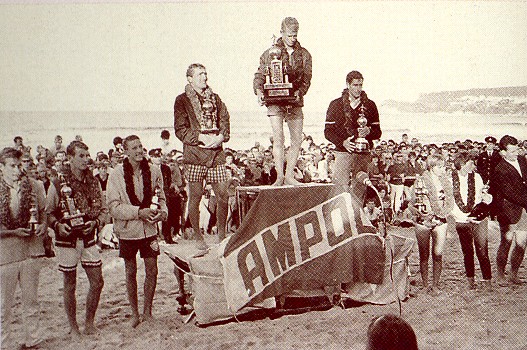 |
| to how it affected
your life. It made quite a change, actually. Whereas quite a bit of my time has been taken up with surfing previously, I found it was practically a full-time job upon my return to Sydney. As the surfing season started to progress, more and more I was called upon to take an active part in publicizing surfing and handling of surfing. I became a figure in surfing, took part in the Australian Surfing Association and was traveling around the coastline and overseas for demonstration purposes. In Australia the public looks more favorably on surfing than in the United States, wouldn't you say? Now it does. It wasn't this way little over 12 months ago. We had the same publicized gremmie problem. I fact, we had what was known as the surfie-rocker war. This was an over publicized minor incident and was jumped upon by the press and blown out of proportion. This caused a large blot to appear on the name of the surfer, but through favorable publicity we have received this summer we've been able to gain a strong foot hold in Australia as a sport. More and more we are being recognized. I feel that now we possibly have a strong foothold than you have here. For us it changed rather quickly from bad to good, while here you've been receiving unfavorable publicity for a number of years, and now you're working towards the favorable publicity and coming up slowly but very strongly. |
 |
| Did your experience and treatment at
Makaha prompt you (Australia) to initiate the
Australian World Championship? We rather took it upon ourselves to have a world contest. We've done so as a radical step to try to create a good image of the international contest. We had international judging at the contest. However, I feel mat aa international contest should be a rotating thing and it should be held each year in a different place — in a different country so that all the surfing areas in the world should be touched upon. It would be a credit to surfing to be able to boast a rotating international contest such as the Davis Cup or possibly the Olympic Games— traveling from country to country. In your country are the contests sanctioned by the Australian Surfing Association? Of course we're still a very young Association and the Association holds a lot of its own contests. The Australian Surfing Association ran off contests in every state in preparation for the World Championships. Do you feel that the United States Surfing Association and the Australian Surfing Association, along with other foreign countries who have or wil have an association, should form an international board to decide on these international contests? The INTERNATIONAL SURFRIDERS' FEDERATION was formed at Manly on May 17. Headquarters are in Peru for one year, as Peru is the site of the next world contest. The Federation ruled that only one world contest should be held a year. The country wishing to submit a bid must invite all countries and sponsor a minimum of three. The contest must be run to the rules of the Federation. I think that there is new hope for contests now — let's hope so. Do you feel this will improve relations between the various counties competing? It certainly will. Quite often sports seem to hold countries together a little closer than politics do. For example, the Olympics. I know that it ... |
Page 39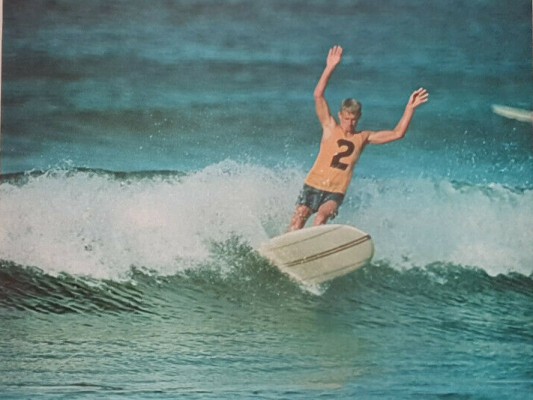 Midget
Farrelly jams a cutback during the recent World
Contest at Many Beach in Australia. A man concerned with every move he makes, Midget displays great concentration over the well executed manoeuvre. Color photography by Ron Perrott. |
|
Australian Word Contest
Photos and story by Ron Perrott. To arrive in a strange land on a cold, wet Tuesday with a howling wind tearing at your coat is bad enough for anyone, but for Makaha Champion Joey Cabell and other top surfers lacing a major competition in a few days time, the outlook was more like "What are we doing here?" Billed by the Australians as the "first truely international surf championships," the World Contest was scheduled for May 16 and 17 at Manly Beach, north of Sydney. Assured by all that the strong southerly winds would prove to be the best thing that could ever happen, the international group was taken on a guided tour of the wind-swept beaches, described by some as "a churning mess." For several weeks before the contest the sand banks had been shaping perfectly. The major worry was whether the small consistent swell would hold out for the big event. It seemed highly unlikely that a ground swell would appear in time, but at least the south wind was a guarantee of sufficient surf for the contest. |
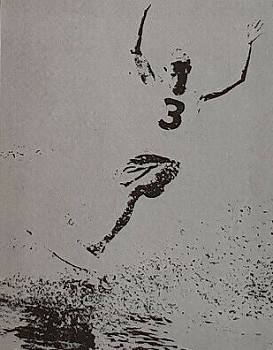 |
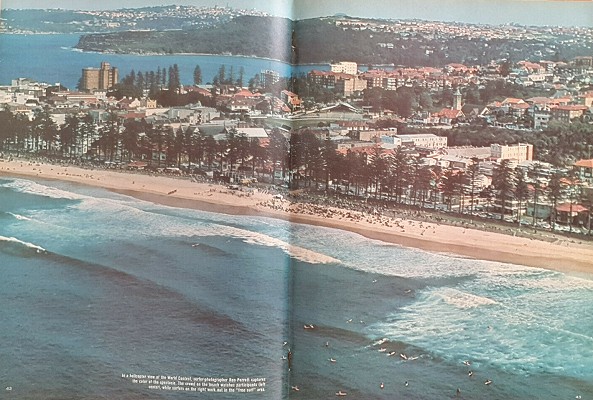 |
In
a helicopter view of the contest, surfer-photographer Ron Perrott captures the color of the event. The crowd on the beach watches participants (left, center), while surfers on the right work out in the "free surf" area. 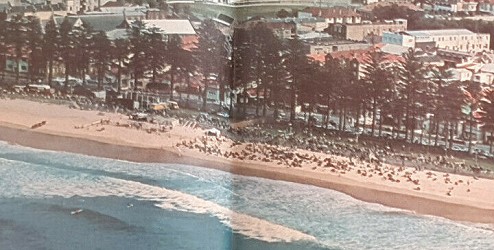 Contest
area detail.
|
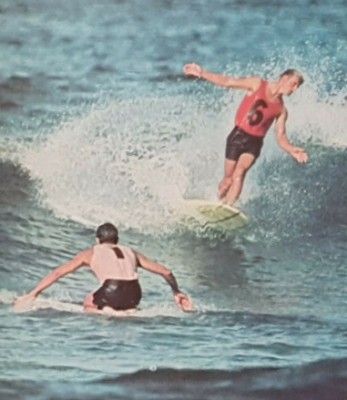 |
Page
47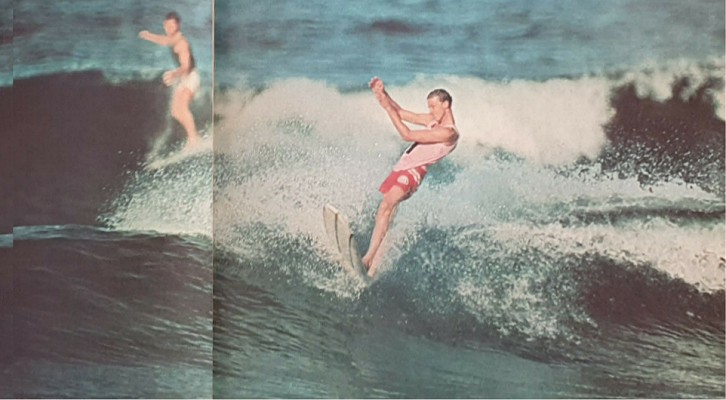 Junior Champion: Nat Young ... a
stall-type cutback.
|
Surfer Volume 5 Number 4 September 1964. |
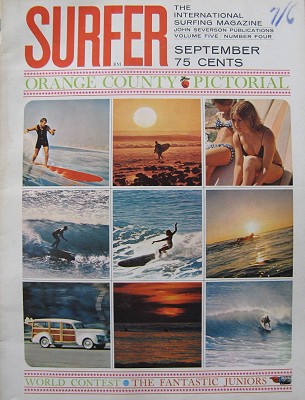 |
Our unique cover montage features the colorful surf of Orange County. From left to right. Top row: Chuck Burgess, Huntington Beach; Sunset, San Onofre; Tanya Binning - Australian World Contest (see page 41); Center row: Don "Red" Thomas, Huntington Pier; Cathy Pierce, San Clemente; paddling out, Doheny; Bottom row: Eric's woodie, Doheny State Park; Sunset, Doheny; rail-grab, Huntington Pier. |
|
|
|
|
|
|